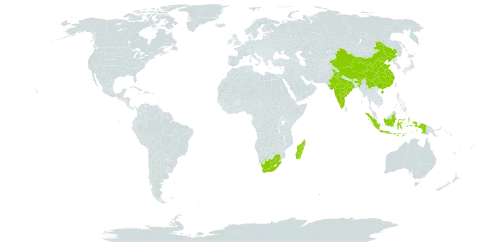Differs from the closely related F. complanata by the following characters: Stems narrower, only 1-1½ mm wide at the top. Leaves narrow, 1-2 mm wide, the cauline ones sometimes much reduced, ½-2 cm long; sheaths rounded on the back or but slightly keeled. Inflorescence less compound, subsimple, with few spikelets, 1-3 cm long and wide. Glumes larger, (2½-)3 by c. 2 mm. Anthers longer, c. 1½ mm. Style longer, 1¾-2¼ mm. Nut smooth, larger, 1-1 1/5 by ¾ mm.
Swamps, swinging bogs, swampy margins of lakes; often dominant, forming large clumps like Carex nubigena and Rhynchospora rugosa, 1600-2300 m.

